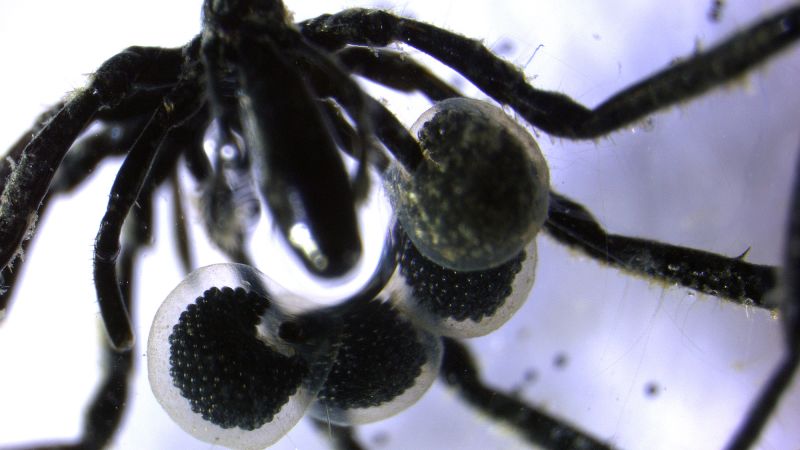In a groundbreaking study, scientists have unveiled three previously unknown species of sea spiders off the US West Coast, showcasing their ability to thrive in the deep ocean by harnessing methane from the seafloor. These remarkable creatures, part of the genus Sericosura, engage in a unique symbiotic relationship with bacteria that live on their exoskeletons, enabling them to convert methane and oxygen into essential nutrients.
The research, published in the journal Proceedings of the National Academy of Sciences, highlights a form of nutrition not previously observed in sea spiders. “Just like you would eat eggs for breakfast, the sea spider grazes the surface of its body, and it munches all those bacteria for nutrition,” explained Shana Goffredi, a professor and chair of biology at Occidental College in Los Angeles and the study’s lead investigator.
While many sea spiders share traits with their land-dwelling relatives, using specialized fangs to capture prey, Goffredi noted that these newly discovered species lack such appendages. Instead, they appear to farm methane-fueled bacteria directly from their bodies, allowing them to adapt to their unique environment.
Goffredi also raised concerns about the role these spiders might play in mitigating the impact of methane on climate change. “While the deep sea feels really far away, all organisms are interconnected… We can’t ever hope to sustainably use the oceans if we don’t really understand the oceans,” she said.
The deep-sea ecosystem where these Sericosura spiders reside is devoid of sunlight, prompting microbes in this area to evolve and rely on chemicals for energy. According to marine biologist Nicole Dubilier from the Max Planck Institute for Marine Microbiology, these bacteria feed on methane released during the decomposition of marine life, attaching themselves to sea animals for sustenance.
Using isotopic analysis of the spiders’ tissues, the research team confirmed that these microbes do not simply hitch a ride but are also consumed as food. “This is really the beauty of the symbiosis between the two: The bacteria get that perfect Goldilocks zone with everything they need,” Dubilier remarked. “Even if 80% of the population are eaten, it’s worth it for the 20% to keep surviving and reproducing.”
Other deep-sea organisms, like tube worms and sponges, are also known to share this rare dietary strategy. Goffredi believes that understanding this ecosystem could pave the way for utilizing similar microbes to address water contamination.
The newfound sea spiders, measuring about 0.4 inches (1 centimeter) in length, come from distinct locales off Southern California and Alaska, indicating they likely have localized populations. Their unique reproductive method involves female spiders ejecting hundreds of eggs from their knees, which males gather into bundles around their legs.
Once hatched, the spiderlings receive a nurturing head start; bacteria from their father clings onto them, providing an early food source. This intriguing aspect of microbiome inheritance could shed light on similar processes in human infants, according to Dubilier.
As researchers continue to explore these depths, Goffredi expressed optimism about discovering more unique sea spider species. “People tend to think of the deep sea as a kind of homogeneous ecosystem, but that’s actually untrue. There’s a lot of biodiversity by region… We don’t want to cause any kind of irreparable harm to very specific habitats that aren’t found anywhere else,” she cautioned.

